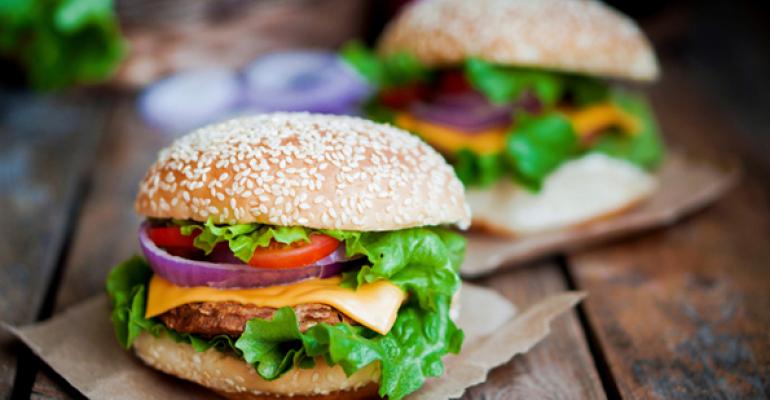
For Millennials raised on the build-your-own meals of Chipotle Mexican Grill and Subway, customization is key.
The “Demand Generation,” as trendspotter Andrew Freeman calls them, is used to having what they want, the way they want it. Customization is now commonly built into the DNA of newer restaurant concepts.
Now, a growing number of mature brands are looking to bring customization to the forefront.
McDonald’s, Pizza Hut, Taco Bell and Pei Wei Asian Diner have recently promoted or tested ways for customers to create their own dishes, sometimes with new or exotic ingredients.
These brands may have long offered guests the ability to swap out toppings or request a special sauce, but are now looking to promote build-your-own features in a bigger way. Here’s a look at what’s new:

McDonald’s
McDonald’s Corp. is testing a Build Your Burger program in four Southern California restaurants that may become a menu option in the future.
By using a touchscreen kiosk or ordering at the counter in these test units, customers can create their own burger — from bun to number of patties — including relatively exotic ingredients like guacamole, chile-lime tortilla strips and creamy garlic sauce.
The Oak Brook, Ill.-based company’s chief executive Don Thompson is pointing often in public statements to the trend of giving customers more choice.
“Customers want to personalize their meals with locally relevant ingredients,” Thompson said in a recent earnings call. “They want choices: Choices in how they order; choices in what they order and how they’re served.”
McDonald’s hasn’t said whether the test will be rolled out in the U.S., but it will be expanded. The program is expected to be in three markets by the third quarter of 2015.
As the quick-service operator struggles to turn around disappointing sales in the U.S., many observers have speculated that brands like Chipotle — which McDonald’s once owned a piece of and divested in 2006 — are stealing market share.
It remains to be seen whether customization could potentially turn things around for McDonald’s.
There are challenges. Customized burgers are likely to be a higher-priced, premium option, which hasn’t worked well for McDonald’s in the past.
Customization also creates operational challenges that could impact speed of service and accuracy.
McDonald’s also offers a build-your-own menu at restaurants in Australia.
Pizza Hut
This week, Pizza Hut will relaunch its menu with new customization offerings that go beyond what the brand has offered before.
While the pizza segment has long been a space where consumers can build their own, Pizza Hut’s new menu doubles the number of ingredient choices, featuring a slew of new options called “Flavors of Now.”
New toppings include sliced banana peppers, Peruvian cherry peppers, spinach, salami and meatballs. New sauces are also in the lineup, including garlic Parmesan, Buffalo, barbecue and honey Sriracha, and new, flavored crusts, including spicy options like Fiery Red Pepper and the Asian-inspired Ginger Boom Boom. Sauces can be added as a “drizzle” on top, including a balsamic version.
The relaunch will include a new digital online and mobile ordering platform that will be more interactive and further enhance customers’ choices.
Although food costs for the new menu are expected to be higher, check averages are also expected to increase.
Franchisees like Overland Park, Kan.-based NPC International Inc., with 1,266 Pizza Hut units, are happy to see a move away from price-point promotions. Consumers want to explore with new flavors, said Jim Schwartz, NPC’s chief executive, president and chairman.
“They want it to be highly customizable,” Schwartz said. “They want to enjoy the flavor experience, but they want to do it their way.”
User feedback on customization
(Continued from page 1)
Taco Bell

Taco Bell moved customization front and center with its national launch of mobile ordering last month.
Taco Bell president Brian Niccol said the app was designed for the brand’s largely Millennial audience — customers who want Taco Bell “where they want it, when they want it and how they want it.”
Customers could have previously made special requests when ordering from menu boards in restaurants, but they typically don’t take the time to explore such customization possibilities with people in line behind them.
When ordering on their smartphones, however, customers have the time to explore the variety of options, like swapping out the Doritos shell flavor in their Cheesy Gordita Crunch, or adding double meat to a burrito.
The app automatically calculates how an ingredient addition, subtraction or swap will impact price. The app also remembers orders, so customers can easily order it again without rebuilding it from scratch.
In tests, user feedback on customization was particularly positive, said Tressie Lieberman, Irvine, Calif.-based Taco Bell’s senior director, digital marketing and platforms.
“This is a way for people to take a product and make it their own,” Lieberman said. “They absolutely love that they can customize and personalize it.”
Pei Wei Asian Diner
Earlier this year, Scottsdale, Ariz.-based Pei Wei reworked its menu to add more customized options, including more variety in portion sizes.
The 192-unit fast-casual chain introduced sushi rolls, as well as smaller-sized wok dishes and entrée salads, designed for those looking for lighter and quicker lunch options, or as an add-on to a meal.
“We want customers to realize there are a whole lot of customization options for them,” said Chris Tebben, Pei Wei’s vice president of marketing. “Some customers, but not all, are aware of the range of vegetarian and gluten-free options we have. You can steam your protein, which cuts calories. We have options in rice: brown and white.”
Offering guests more choice in portion size will add to their ability to create their own experience.
“You have to lean in on the belief that providing choice and, in this case, portion-size choice, is the right thing to do,” Tebben said. “It’s going to drive frequency into the business.”
Contact Lisa Jennings at [email protected].
Follow her on Twitter: @livetodineout





